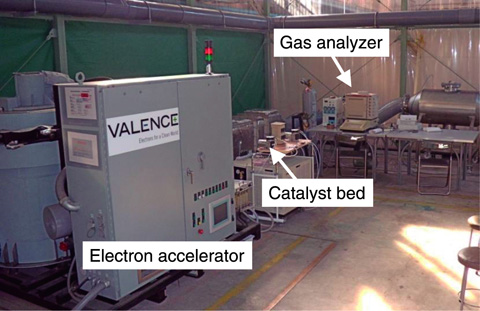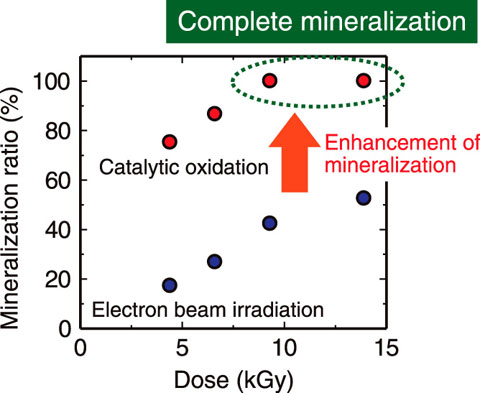
Fig.4-19 Electron beam/ozone decomposition catalyst (MnO2) system

Fig.4-20 Enhancement of mineralization of toxic organics using electron beam/catalyst system
The presence of paint-solvent organics in waste gases emitted from painting factories has led to the production of photochemical oxidants in the atmosphere. We have developed a waste-gas purification system that can oxidize such organics into CO2 by electron beam (EB) irradiation combined with catalytic oxidation. In previous studies, we found that an ozone decomposition catalyst was the best matching catalyst since active oxygen species produced from the decomposition of by-product ozone over the catalyst under EB irradiation are effective in oxidizing organics. For the practical use of the purification system in factories emitting waste gases (flow rate: 1 × 104 to 2 × 104 m3/h: gas velocity: ∼5 m/s), the effectiveness of the purification system should be evaluated under pilot-scale conditions (flow rate: 500∼1000 m3/h: gas velocity: ∼5 m/s).
In the present study, an EB/ozone decomposition catalyst system was constructed for conducting a pilot-scale test for the mineralization of organics in an airstream (Fig.4-19). This system consists of a compact electron accelerator and a honeycomb-type manganese dioxide (MnO2) bed to efficiently decompose ozone in a turbulent airstream. The catalyst was heated to 100 °C for the desorption of the EB-generated nitric acid to deactivate the catalyst.
An airstream containing a mixture of xylene and toluene (concentration of each compound: 5 ppmv: flow rate: 500 m3/h: gas velocity: ∼5 m/s) was introduced in the EB/MnO2 system. The mineralization of these organics into CO2 and CO was examined in the presence and absence of the catalyst. The presence of the catalyst enhanced the mineralization of unreacted xylene/toluene and their irradiation products: the mineralization ratio increased from 42% to 100% when the catalyst was used with an irradiation dose of 9.3 kGy (Fig.4-20).
In view of the present results, we intend applying this purification system to actual waste gases in cooperation with chemical engineering companies for protecting the earth’s environment.